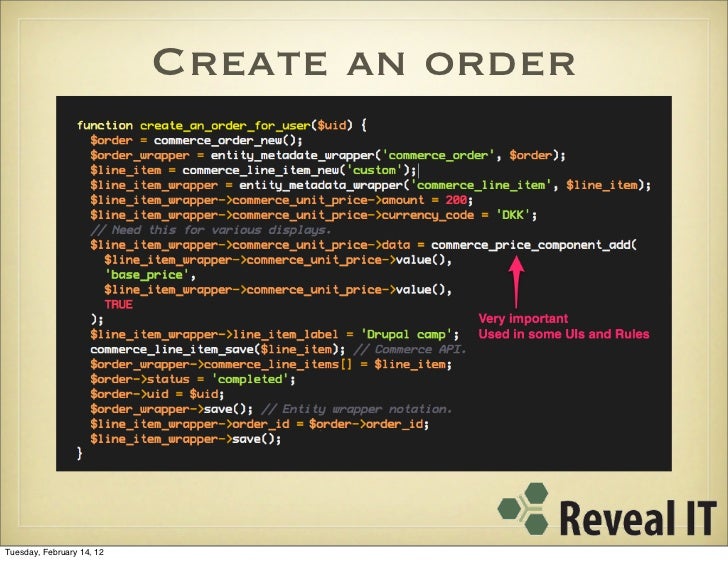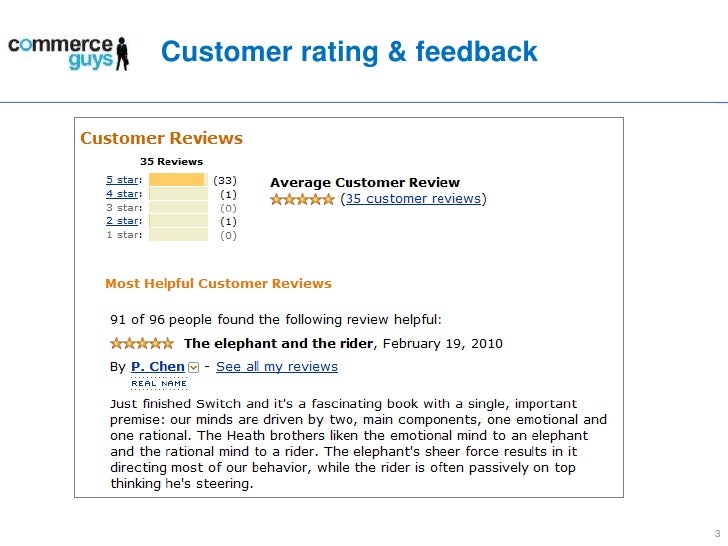

You can do that last bit using Drupal's standard block management interface at admin/structure/block.This is how we support the Drupal community You can also replace it with an editable cart by first dragging it into the Disabled section, and then displaying the Shopping Cart block on the checkout page. You can remove the cart from the checkout page altogether by simply dragging it into the Disabled section under Commerce's Checkout settings. Depending on what type of buying process you're trying to build, you may want to change that. You may notice that the cart displayed on your checkout page isn't editable. String Overrides is pretty simple to use, so we'll forego a walk through for this portion. You'll want to use the String Overrides module to change the Add to Cart text used on product pages to Buy now, and the Continue to next step text on the checkout page to Express Checkout. Change your button text to make better sense

Listo! Your custom order completion page will make sure your anonymous users don't feel deserted after their payment has gone through. Type the path of your custom order completion page in the Value dialogue, then click Save.Check Negate near the bottom of the page, then click Save.
 Select authenticated user from the Value options under Role. Type site:current-user in the Data Selector dialogue. Select User has role(s) from the Select the condition to add dropdown. Under the Conditions section, click Add condition. Select Completing the checkout process from the React on event dropdown, then click Save. Enter Redirect to anonymous order completion as the rule's name. Once you've created a custom order completion page for your anonymous shoppers, you can use rules to make sure they see it: It might be smart to create an order completion page for anonymous users wherein you let them know about these fairly important details. This means that the user will need to activate their account in order to view their order or receipt information. It can't, however, log them in after account creation. Set your users' expectations with a custom order complete pageĭrupal Commerce creates a user account on the fly when an anonymous user checks out. Voila! Now your anonymous users can shop to their hearts' content. Under the Checkout section, grant the Access checkout permission to anonymous users. From, click on the People link, then Permissions. Changing this is almost as easily done as said: Grant anonymous users the Access checkout permissionīy default anonymous users aren't permitted to complete the checkout process. Presto! Emptying the Review order section of the checkout process is the gist of a single page checkout. Drag the Payment item out of the Review order section and up into the Checkout section. Drag the Review item out of the Review order section and down into the Disabled section. From, click on the Store link, then Configuration, then Checkout settings. Getting rid of the multi-page process is a cinch: For a simple order, though, it just means more clicks and skim-reading before your users' orders are complete. For large, complicated orders, this makes a lot of sense. Shift your checkout panes out of review orderĬommerce separates different portions of the checkout process onto separate pages. There! Now your users will go directly to checkout instead of hassling with the pesky shopping cart page. Type checkout in the Value dialogue, then click Save. Under the Select the action to add dropdown, select Page redirect. Under the Actions section, click Add action. Select After adding a product to the cart from the React on event dropdown, then click Save. Enter Redirect to checkout on add to cart as the rule's name. From, click on the Configuration link, then Rules, then Add a new rule. Create a rule to redirect users to checkoutįirst we'll add a system rule to redirect users to the checkout page after they click the Add to Cart button. Before we get started, make sure you've installed commerce and configured your first products. It's also very easy to set up - we'll do it in five steps and about ten or fifteen minutes. We'll also assume that you want your users to proceed to checkout the moment they click a Buy now button, instead of having to first proceed to a shopping cart page.Īn express checkout can un-clutter your website's online shopping experience and keep your users happy. What is express checkout? For the sake of this post, we'll call it a single page checkout process that any user - including an anonymous user - can complete in a snap. That's why we've put together a cheat-sheet for configuring a clean, simple express checkout with Drupal Commerce. Wading through its several pages of configuration options isn't always easy, though. Drupal Commerce is a robust, flexible e-commerce platform.
Select authenticated user from the Value options under Role. Type site:current-user in the Data Selector dialogue. Select User has role(s) from the Select the condition to add dropdown. Under the Conditions section, click Add condition. Select Completing the checkout process from the React on event dropdown, then click Save. Enter Redirect to anonymous order completion as the rule's name. Once you've created a custom order completion page for your anonymous shoppers, you can use rules to make sure they see it: It might be smart to create an order completion page for anonymous users wherein you let them know about these fairly important details. This means that the user will need to activate their account in order to view their order or receipt information. It can't, however, log them in after account creation. Set your users' expectations with a custom order complete pageĭrupal Commerce creates a user account on the fly when an anonymous user checks out. Voila! Now your anonymous users can shop to their hearts' content. Under the Checkout section, grant the Access checkout permission to anonymous users. From, click on the People link, then Permissions. Changing this is almost as easily done as said: Grant anonymous users the Access checkout permissionīy default anonymous users aren't permitted to complete the checkout process. Presto! Emptying the Review order section of the checkout process is the gist of a single page checkout. Drag the Payment item out of the Review order section and up into the Checkout section. Drag the Review item out of the Review order section and down into the Disabled section. From, click on the Store link, then Configuration, then Checkout settings. Getting rid of the multi-page process is a cinch: For a simple order, though, it just means more clicks and skim-reading before your users' orders are complete. For large, complicated orders, this makes a lot of sense. Shift your checkout panes out of review orderĬommerce separates different portions of the checkout process onto separate pages. There! Now your users will go directly to checkout instead of hassling with the pesky shopping cart page. Type checkout in the Value dialogue, then click Save. Under the Select the action to add dropdown, select Page redirect. Under the Actions section, click Add action. Select After adding a product to the cart from the React on event dropdown, then click Save. Enter Redirect to checkout on add to cart as the rule's name. From, click on the Configuration link, then Rules, then Add a new rule. Create a rule to redirect users to checkoutįirst we'll add a system rule to redirect users to the checkout page after they click the Add to Cart button. Before we get started, make sure you've installed commerce and configured your first products. It's also very easy to set up - we'll do it in five steps and about ten or fifteen minutes. We'll also assume that you want your users to proceed to checkout the moment they click a Buy now button, instead of having to first proceed to a shopping cart page.Īn express checkout can un-clutter your website's online shopping experience and keep your users happy. What is express checkout? For the sake of this post, we'll call it a single page checkout process that any user - including an anonymous user - can complete in a snap. That's why we've put together a cheat-sheet for configuring a clean, simple express checkout with Drupal Commerce. Wading through its several pages of configuration options isn't always easy, though. Drupal Commerce is a robust, flexible e-commerce platform.







 0 kommentar(er)
0 kommentar(er)
